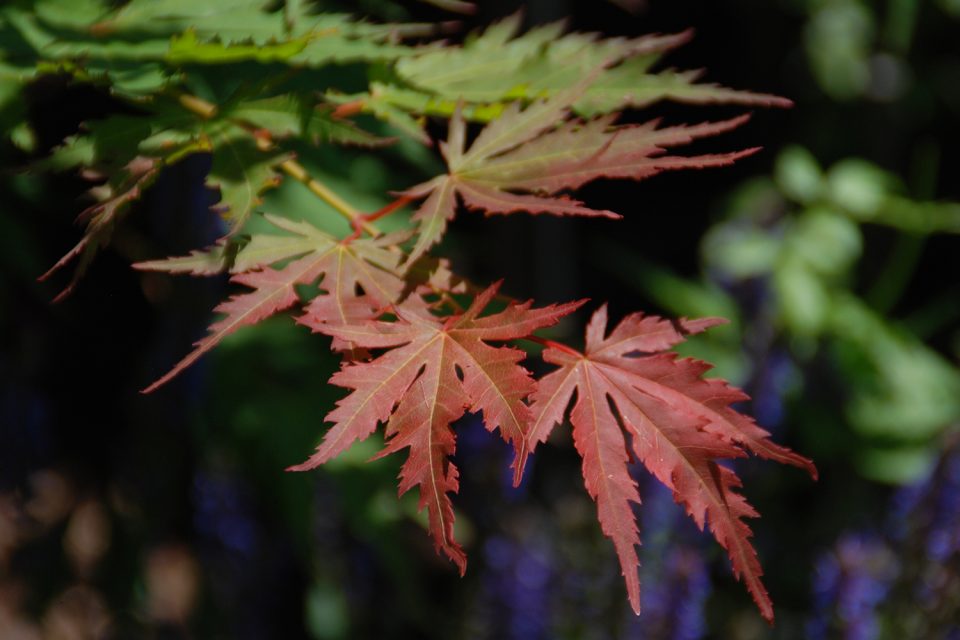By Melinda Myers
The brilliant fall color in our landscapes is a magical transformation that happens each year. And the science behind it is just as intriguing.
Each fall as the days shorten our deciduous trees and shrubs begin this transformation. The plants produce less of the chlorophyll that gives leaves their normal green color. The existing chlorophyll starts breaking down, revealing the underlying pigments of yellow, red or orange.
The carotenoid and xanthophyll pigments assist the chlorophyll in capturing light and producing sugar during the growing season. The beta-carotene contributes to the orange and orange-yellow fall color. Lutein is the most prominent xanthophyll pigment producing bright yellow fall color. There are over 80 different pigments in these two categories contributing to the variations in fall color.
The tannins in leaves contribute to the golden and brown fall colors. These are thought to discourage animals and insect pests from feeding on the leaves and help defend the plants against disease organisms.
At the same time, these plants begin to create an abscission layer between the leaf and stem. This barrier prevents the sugars produced in the leaves from moving down into the roots for storage.
Purple and red fall color, from the anthocyanin foliar pigments, is produced when sugars build up and are trapped in the leaves. This results in brilliant red and purplish-red fall color. Some of these pigments are present during the growing season and can be seen in new growth and mature leaves of some plants. These add color to the garden, help protect the plant cells from high light damage, and may discourage animals and insects from dining on the plants.
Warm, sunny days followed by cool nights without a hard frost mean more sugar and better red, orange, and purple fall color. Sufficient soil moisture helps keep the leaf color bright for a longer period of time. Leaf color fades, turns brown and leaves drop from the tree more quickly during dry fall weather.
Fall foliage is not restricted to deciduous trees and shrubs. The leaves of many of our favorite perennials also turn brilliant colors in the fall.
Solomon’s seal and hosta leaves turn a beautiful yellow, echoing the fall flowers of witch hazel and yellow leaves of ginkgo and quaking aspen. The delicate heart-shaped leaves of barrenwort, botanically known as Epimedium, turn red in fall. Some of the leaves drop in fall like most trees and shrubs. Others will persist through winter and drop as new leaves and flowers appear in spring.
Perennial geranium and Bergenia leaves turn reddish-purple in fall. Both will persist, adding color to the winter and early spring garden.
Brighten up the fall landscape with the fine texture and amber-gold fall foliage of Angelina sedum and willow amsonia.
The fluffy white seed heads of our native little bluestem complement the coppery-red fall color that persists throughout the winter.
Genetics determine the color each plant tends to produce in fall, while weather and the plant’s health influence if and how intensely the color will be expressed. Consider fall color when adding plants to the landscape. Then provide proper care to keep them healthy and looking their best throughout the year.
Melinda Myers is the author of over 20 gardening books, including The Midwest Gardener’s Handbook and Small Space Gardening.




